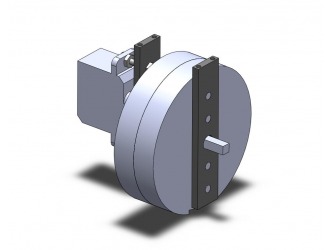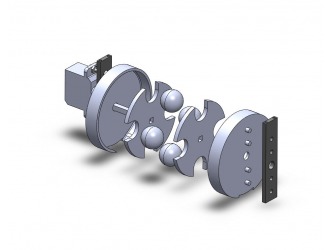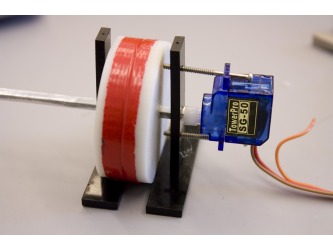Bombing Mechanism
The main mechanical aspect that was created in this project was the bombing mechanism. We decided that we wanted to create a bombing mechanism which had a capacity of more than one bomb, regardless of the shape or size of the bomb. The ultimate design included a round drum that had a capacity of 4 bombs. The round drum has a hole at the bottom, and whenever the placeholders of the bombs are rotated over the bottom, the bomb is released. In order to turn the placeholders, an aluminum square rod was glued to the servo, and the placeholders were given square cutouts so that the rod would turn them. However, the drums, which are not intended to move, were given round cutouts so that the square rod would simply rotate within the cutouts and not move the entire drum.
Because the servo used for the bombing mechanism could not turn more than 360 degrees, we modified it by taking out the entire circuit board and any physical restraints for the servo, so that it is essentially a motor. To control the movement of the servo, a voltage was outputted to the servo for a set amount of time to allow it to turn only 90 degrees at a time.
Vibration Reduction
The airplane that we bought had a defect, in that the propeller shaft was not balanced correctly. This makes it so that when the motor is spinning, there is a significant amount of vibrations through the airplane. This blurs the video so that a good deal of sharpness is lost in the picture quality. To reduce this effect, we taped down the wheels on the airplane, which were amplifying the vibrations as they are loose. We also moved the placement of the camera from the front of the plane to the middle of the plane. Moving it farther away from the motor will decrease vibrations, as the motor is the ultimate source of the vibrations. The rest of the airplane, especially the wings and the vertical and horizontal stabilizers, act as a damper when moving through the air, as the airflow will fix it in relative space.






